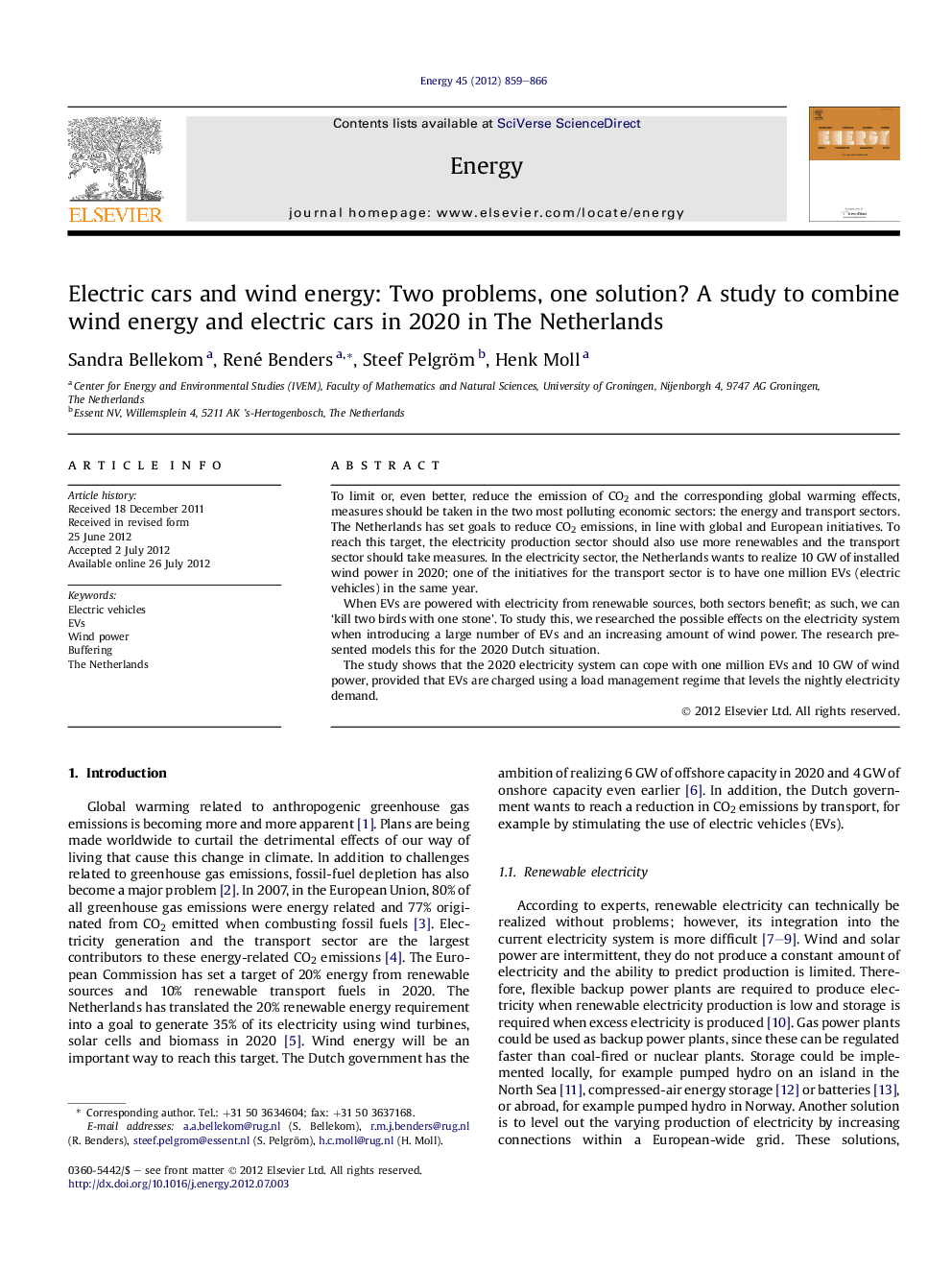| Article ID | Journal | Published Year | Pages | File Type |
|---|---|---|---|---|
| 1733732 | Energy | 2012 | 8 Pages |
To limit or, even better, reduce the emission of CO2 and the corresponding global warming effects, measures should be taken in the two most polluting economic sectors: the energy and transport sectors. The Netherlands has set goals to reduce CO2 emissions, in line with global and European initiatives. To reach this target, the electricity production sector should also use more renewables and the transport sector should take measures. In the electricity sector, the Netherlands wants to realize 10 GW of installed wind power in 2020; one of the initiatives for the transport sector is to have one million EVs (electric vehicles) in the same year.When EVs are powered with electricity from renewable sources, both sectors benefit; as such, we can ‘kill two birds with one stone’. To study this, we researched the possible effects on the electricity system when introducing a large number of EVs and an increasing amount of wind power. The research presented models this for the 2020 Dutch situation.The study shows that the 2020 electricity system can cope with one million EVs and 10 GW of wind power, provided that EVs are charged using a load management regime that levels the nightly electricity demand.
► We modelled increasing wind power capacity combined with electric vehicles. ► Buffering of excess (wind) electricity in EVs is beneficial for both. ► The Dutch 2020 electricity system can cope with 1 million EVs and 10 GW wind power. ► The positive effects of EVs strongly depend on the applied load management regime.
